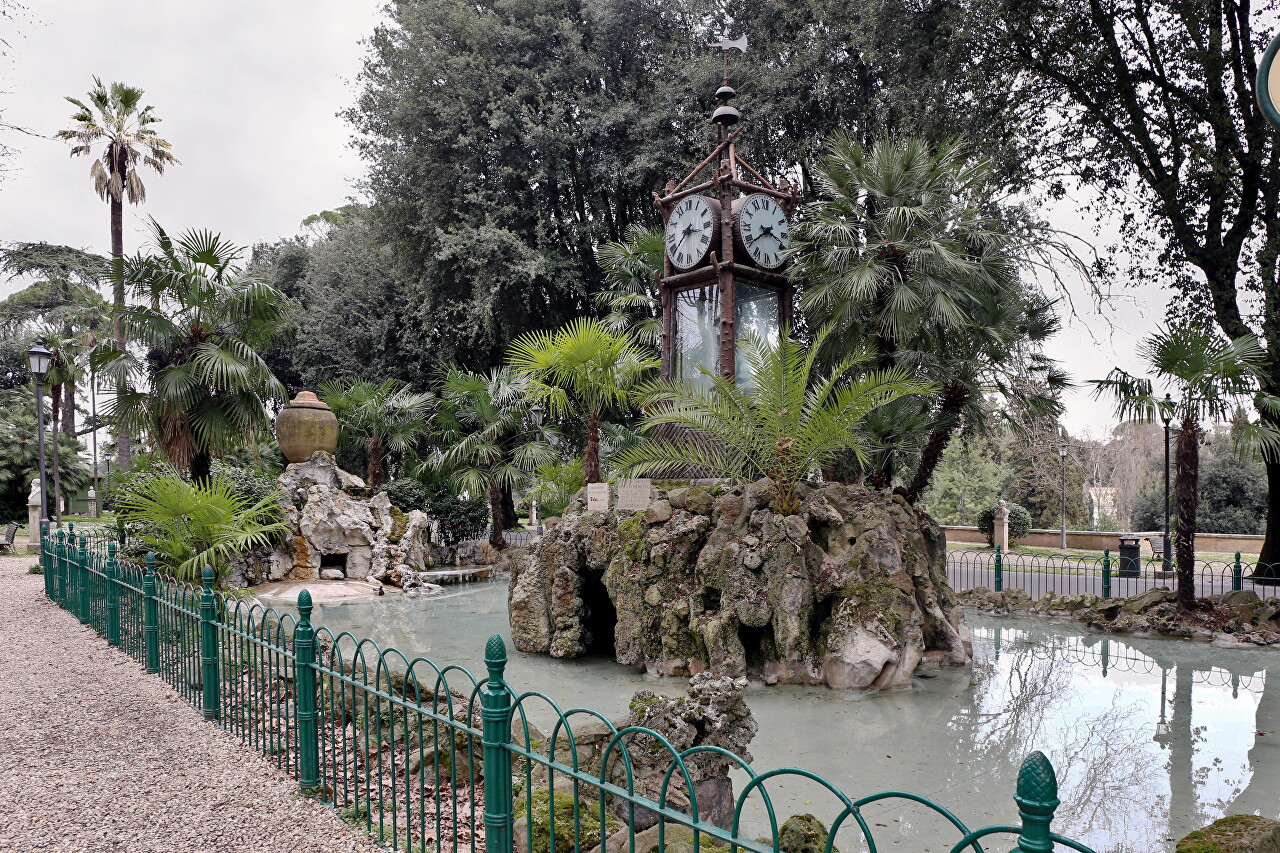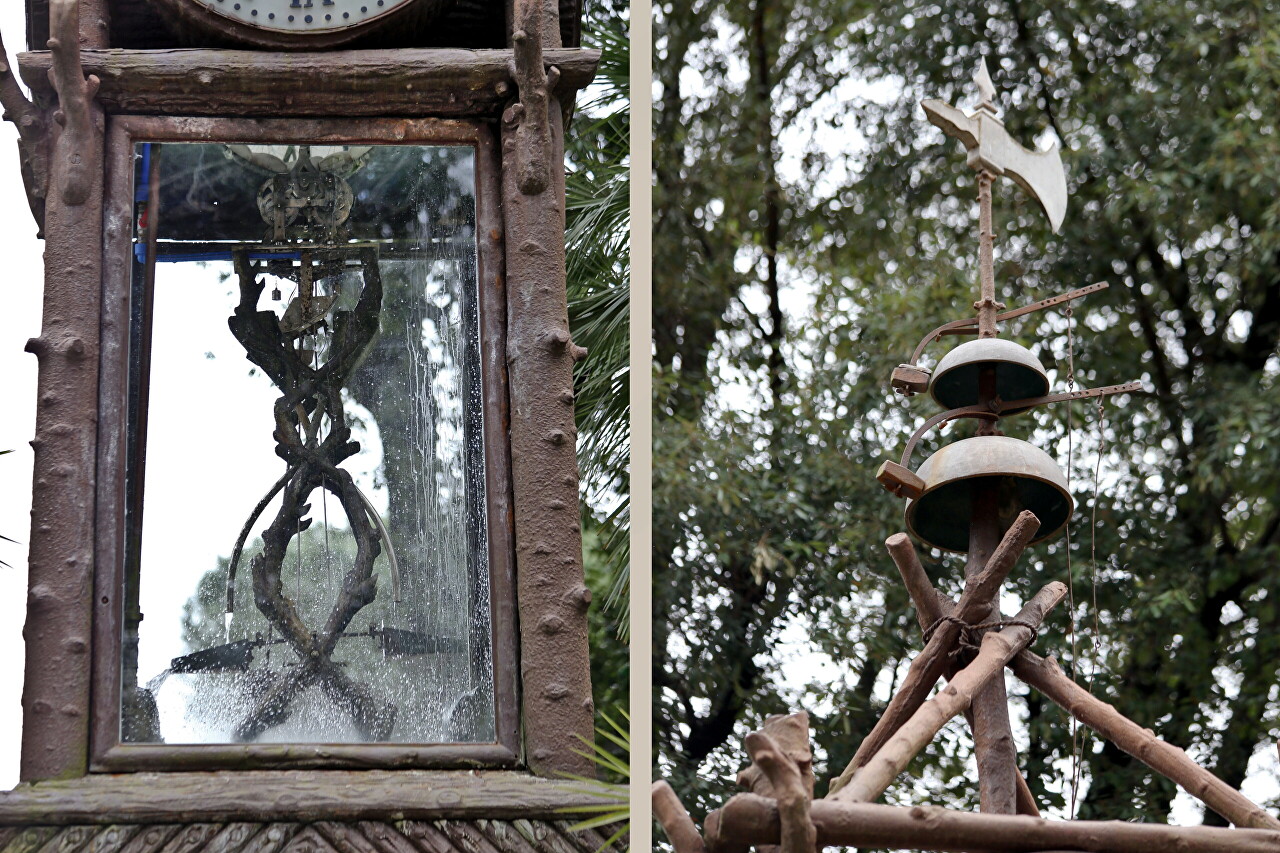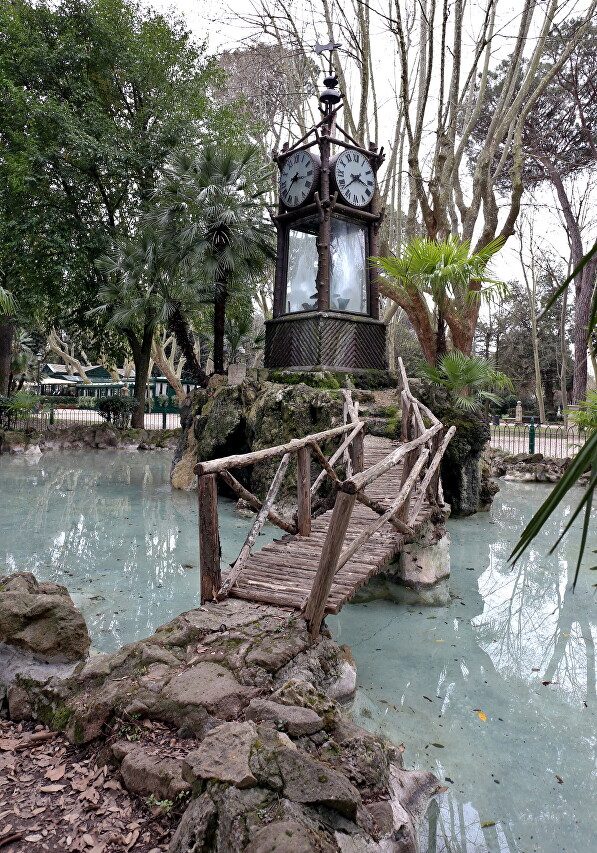Water Clock at the Pincio
In the eastern part of the Pincio Park, between two alleys, there is a small ornamental lake, which is not immediately noticeable among the thickets. In the center of the lake, on a picturesque grotto, you will see an amazing clockwork mechanism known as Orologio ad Acqua del Pincio. It was created by a Dominican friar from Liguria, Giovanni Battista Embriaco. Giovanni was born in Seriana in 1829, to a noble Genoese family, and in 1840 accepted obedience. In the monastery, the young man received a good education and became interested in mechanics. Giovanni made his first self-designed watch at the age of 17. He also created various machines and tools for metalworking and devices for transmitting telegrams. In 1867, Giovanni built a water clock and went with it to the World's Fair in Paris.

The device of the watch is very simple, and this is their main advantage. As an energy source for driving the arrows, a stream of water is used, which alternately fills two bowls that drive the pendulum. Initially, the watch also had a water-powered sound mechanism that struck every quarter of an hour. Thus, this ingenious creation absorbed most of the sections of classical physics.

The original mechanism aroused public interest and received a compliment from Napoleon III. Several patents were sold. However, when he returned to Rome, the inventor found no support. The Catholic Church was lukewarm about scientific advances, seeing them as a threat to its supremacy in the state hierarchy.

Nevertheless, the inventor found support in the face of the Swiss architect Gioacchino Ersoch, who was engaged in the reconstruction of the gardens of Villa Borghese. In 1873, the mechanism was placed in a cast-iron glazed tower, stylized as tree trunks and branches, and was connected to the water supply system of park fountains. After that, the aristocrats began to order similar watches for their palaces and parks. In Rome, another mechanism of work of Giovanni Embriaco has been preserved, it is located in the Berardi Palace.
